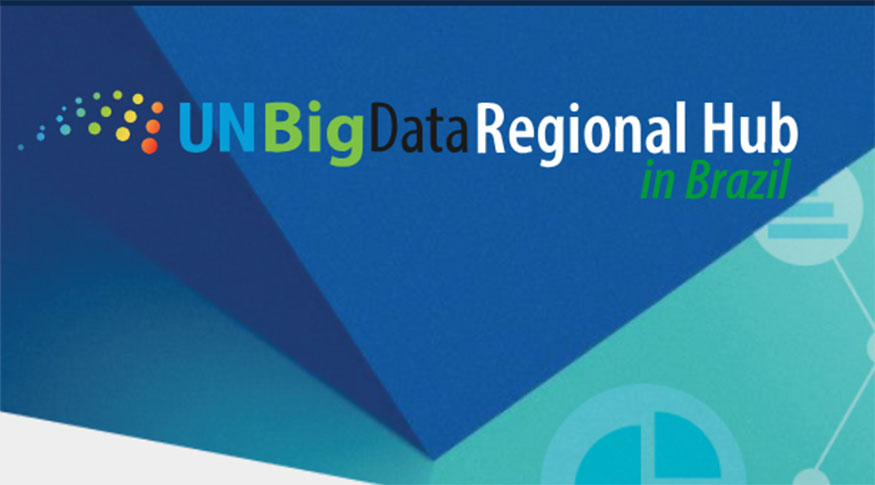2022 Census
IBGE sends preview of municipal populations to TCU based on the 2022 Census
December 28, 2022 10h00 AM | Last Updated: December 29, 2022 06h53 PM
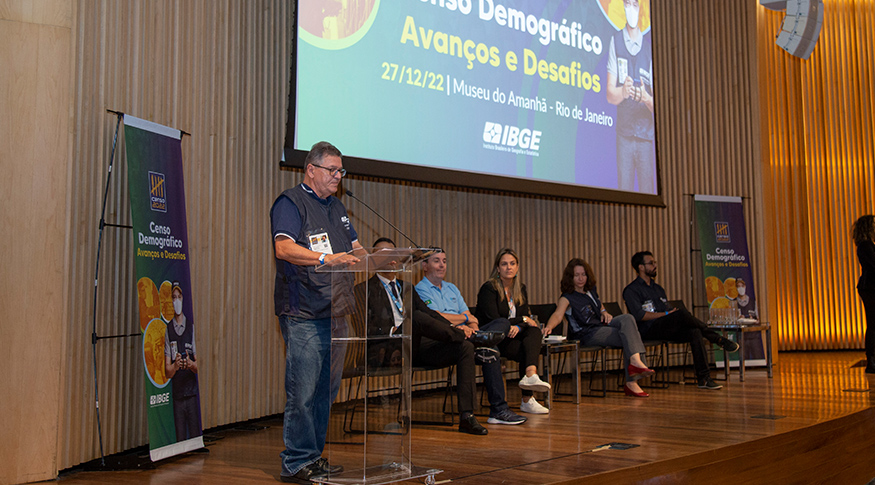
The IBGE sends today (28) to the Federal Court of Auditors (TCU) the preliminary population of the municipalities based on the 2022 Population Census data collected until December 25. By the end of the year, the IBGE always sends the list of the population of all Brazilian municipalities to the TCU. As the 2022 Census is not yet concluded, this year the Institute decided to calculate the population based on the data collected so far. The number of inhabitants is used to calculate the Sharing Revenue Fund of the Municipalities and to determine political representations, such as the number of city councilors and federal and state congressmen.
The Director of Surveys at the IBGE, Mr. Cimar Azeredo, explained the methodology of the population preview based on partial data collected in the 2022 Census at the meeting Population Census - Advances and Challenges, held yesterday morning (December 27), at the Museu do Amanhã (Tomorrow Museum), downtown Rio de Janeiro (RJ).
“We have another mission and we need to take advantage of the Census, disclosing data for 2022 based on our data collection. Collection goes on in January, surveying places we haven't been to yet. We will carry out supervision and quality control, returning to households classified as refusal, closed, vacant or for occasional use; we will also supervise cases of omission, duplication and inconsistencies. The post-enumeration survey will be carried out as well”, informed Mr. Azeredo.
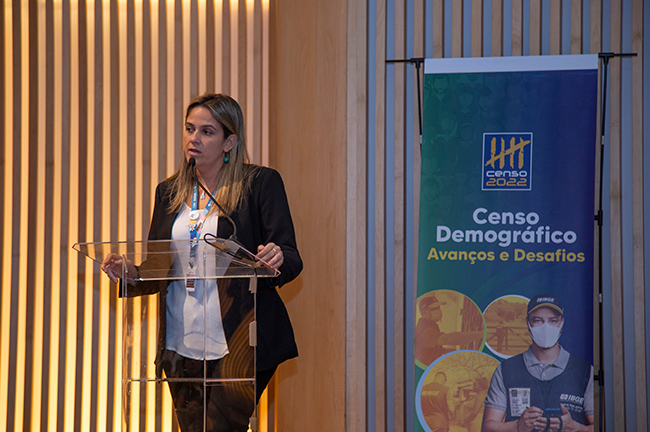
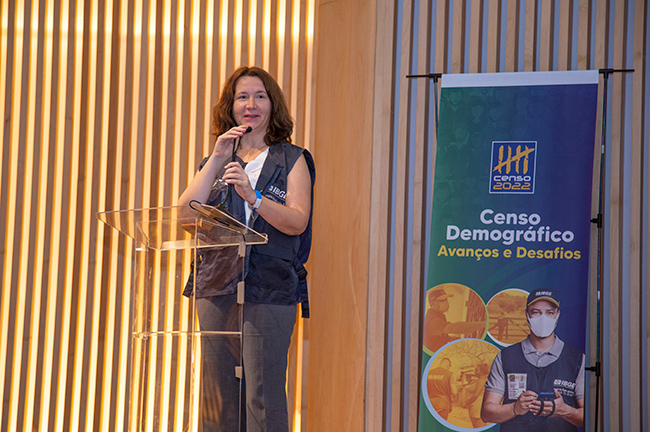
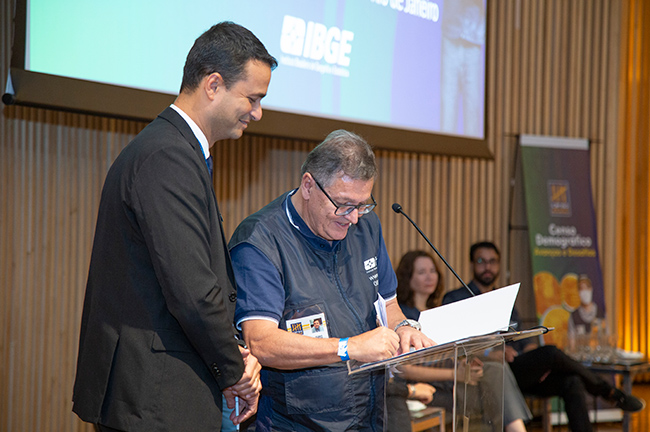
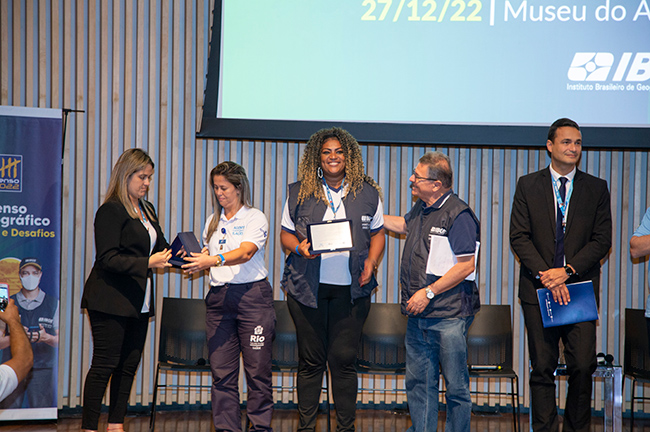 Health agents Suelem de Souza and Fabíola Borges da Costa were awarded.
Health agents Suelem de Souza and Fabíola Borges da Costa were awarded.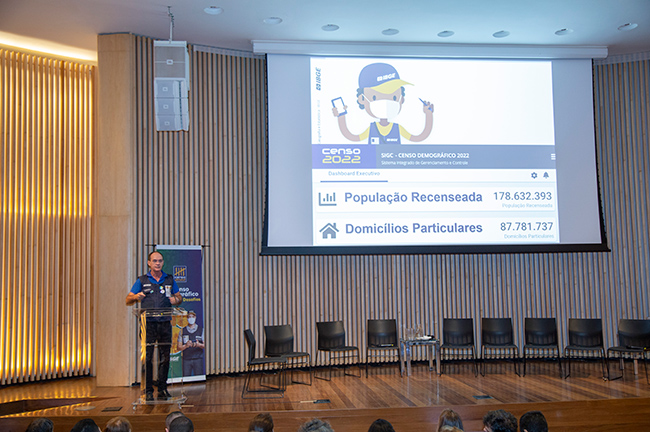 The director of Surveys at the IBGE, Cimar Azeredo, took stock of the progress of the 2022 Census.
The director of Surveys at the IBGE, Cimar Azeredo, took stock of the progress of the 2022 Census. The coordinator of the Census of Traditional Peoples and Communities, Marta Antunes, highlighted that Quilombola communities will leave statistical invisibility.
The coordinator of the Census of Traditional Peoples and Communities, Marta Antunes, highlighted that Quilombola communities will leave statistical invisibility. Final debate gathers seven state superintendents with advanced collection.
Final debate gathers seven state superintendents with advanced collection.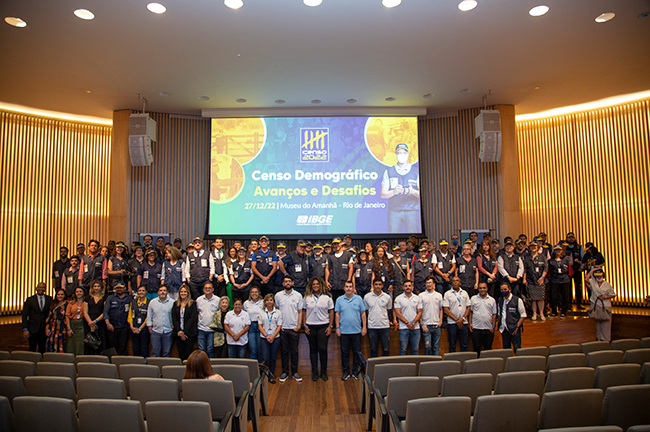 The event marked the final stretch of the 2022 Population Census.
The event marked the final stretch of the 2022 Population Census.At the event, a Technical Cooperation Agreement was also signed between the IBGE and the Municipal Health Secretariat, by the president of the IBGE, Eduardo Rios Neto, and the Management Subhead of the Municipality of Rio de Janeiro, Márcio Leal. The two institutions will develop initiatives to include health agents in the collection and updating of the National Address List for Statistical Purposes (CNEFE), a nationwide address inventory kept by the IBGE.
The Head of Primary Health Care Promotion and Surveillance , Ana Luiza Caldas, highlighted the need to use health and surveillance agents from November onwards to reach the population that enumerators could not reach. Health agents Suelem de Souza and Fabíola Borges da Costa were symbolically awarded.
During the event, Rios Neto and Cimar Azeredo thanked the partnership with the municipality of Rio de Janeiro and the Municipal Health Secretariat and took stock of the achievements and challenges of the 2022 Population Census. The president of the IBGE highlighted innovations such as the Paquetá test, which was not part of the planning, just like the pandemic was not, but broke paradigms and allowed tests to be carried out in 27 state branches, another technological innovation.
“Rio de Janeiro, in particular, innovated again, before collection challenges, having its health agents participate in the collection. Other achievements were real-time collection monitoring with daily data from the enumerated population. This will allow a more rapid dissemination plan and capturing the coordinates of the households”, highlighted the IBGE president.
Lack of enumerators was one of the biggest challenges
Regarding the challenges, he highlighted that the main one was the lack of enumerators, with the heating up of the job market in the second half of 2022. In Santa Catarina, for instance, the unemployment rate is 3.9%, almost full employment. Another challenge was the social media that tend to amplify isolated cases.
“The light at the end of the tunnel has already been seen, but the challenge is not letting the inertia of the beginning of the year prevail. In January, we will step on it. From the financial and operational points of view we are positive that we need to pursue the completion of the Census”, summarized Rios Neto
The Representative of the United Nations Population Fund in Brazil, Júnia Quiroga, also highlighted IBGE innovations at a global level, such as the 2010 Census, which allowed the creation of Reference Centers for electronic collection in Africa. In the 2022 Census, she highlighted the monitoring of collections in real time; the arrival of international observers from 25 countries, a bold measure as they brought feedback but also suggestions for improvements; and the enumeration improvement of traditional peoples and communities.
“The Population Census is the most complex peacetime civilian operation. And in a continental country like Brazil there are innovations such as the interaction of data collection with public policies. It is necessary to encourage statistical production not only for technical analysis, but as an instrument for the development and use of data for qualified decision-making”, said Ms. Quiroga.
For the Director of Surveys, Cimar Azeredo, despite the challenges, the Census is in the process of being completed. “Our biggest challenge was hiring enumerators, we planned to hire 180,000 and the maximum we reached was 120,000. Then the pandemic disrupted previous planning and weather phenomena such as rainfall contributed to delays. This was also the first census with social media influence and we had to fight against fake news. We also had problems paying enumerators because we had not tested the system beforehand. In addition, there were many Provisional Measures”, said Mr. Azeredo, listing the challenges.
He highlighted innovations such as the systematic previous record of information about subnormal agglomerates, which made access to these communities easier. And the improvement of the registration of traditional communities, for the first time with full coverage (100%) of Indigenous areas and the first registration of Quilombola communities, taking them out of statistical invisibility, according to the coordinator of the Census of Peoples and Traditional Communities, Marta Antunes.
The tests in the 27 state branches offered a glimpse into how the census operation works, with experiences in nine municipalities, four districts, seven neighborhoods and ten localities. The training was challenging, resulting in the training of more than 240,000 people, under the supervision of the operational coordination of the Census and support from the National School of Statistical Sciences (ENCE). There were also advances in CNEFE.
In terms of technology, there have been advances in the area of information technology and the use of high-resolution satellite images, capturing coordinates that will leave a legacy for civil defense and disaster prevention; and use of dashboards to visualize the results. Furthermore,it was an extremely connected census, with chips in the Mobile Collection Devices (DMCs) that allow real-time transmission of the collection.
“This speeds up Census follow-up and reduces the need for a collection point. We haven't used 5G yet, but probably 5G will be used in new collections. We also use maps based on the collection of coordinates”, stated IBGE's IT director, Carlos Renato Cotovio.
The Disk Census 137 service was also launched at the event. Residents of households where no one answered the 2022 Census should call Disk Census 137, available in selected municipalities in all states of the country since yesterday (December 27). The service will be made available gradually in the municipalities according to the collection progress in each location. To find out if Disk Census is available in your municipality, please click here.
At the end of the event, a debate brought together seven superintendents from some of the states with the most advanced collection. José Mendes Coelho, from Amazonas, Leonardo Santana Passos, from Piauí; Adriane Almeida do Sacramento, from Sergipe. Francisco Garrido Garcia, from São Paulo, Roberto Kern Gomes, from Santa Catarina, Edson Roberto Vieira, from Goiás and José Francisco Teixeira Carvalho, from Rio de Janeiro.
The 2022 Census has been in the field carrying out collections since August 1st and will go on in January 2023.







